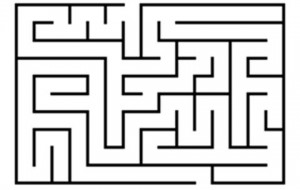Author Archives: Olivia Choe
Blog: Taboo (Olivia Choe)
There is still an ongoing debate on whether males actually exceed in spatial ability than females. This claim has become a taboo for females in STEM. In “Science, Sex, and Good Sense: Why Women Are Underrepresented in Some Areas of Science And Math,” author Diane F. Halpern does an excellent job embracing the positives of these cognitive sex differences. She does agree upon the existence of cognitive sex differences; however, she concludes that no talent is immutable. An individual’s mindset along with the environmental factors such as stereotype threats are also determining factors for career choices. We cannot point fingers and argue cognitive sex difference is the sole reason for female underrepresentation. Although cognitive sex differences may exist, underrepresentation in the math and sciences is not so much due to these differences, but rather due to the environment and mindset of an individual.
COGNITIVE SEX DIFFERENCES:
Let’s first get one thing clear. Evidence and data suggests that males are more skilled in spatial ability, while females exceed in visual-spatial tasks (125). Females do not have the exact cognitive abilities as males; however, this does not mean they are incapable in working in the math and sciences. Women are obtaining 50% of the MD degrees from medical schools, 75% receive VMDs, and 44% receive PhDs in biology and life sciences (122). Overwhelming data shows that women are capable of succeeding in STEM. However, women are not achieving equally in parts such as engineering, computer science, and mathematics. Diane F. Halpern suggests that even in the science fields, women tend to choose careers that deal with “people” rather than “things.” She suggests that this may be a reason why females are not so well represented in careers like engineering. However, it is hard to conclude that this is the sole reason for such underrepresentation. This then leads me on to my main two points, which are the environmental factors and mindset that come into play for the underrepresentation of females in STEM.
ENVIRONMENT:
With the current freedom and opportunities females are given nowadays compared to the past, it’s hard to notice gender bias. However, bias does exist especially in the realm of science. Due to an existing gender bias, this creates the presence of sex-segregated jobs. Author Halpern mentions how the presence of sex-segregated jobs influences some of our career choices. For example, it is likely that there will be less female piano movers in New York City because, on average, women tend to have less upper body strength than men. However, this does not necessarily mean that there will be no female piano movers. Even as we are living in the 21st century, a lot of women are the caretakers of the family and home. Due to this extra job as the “caretaker,” women need more flexible times to take care of the children or carry on other household duties. So, jobs like engineering and computer science, which require more time, forces women to pursue other careers in STEM that offer more flexible time. Another environmental factor Halpern mentions is the presence of stereotype threat. Stereotype threat has shown to exacerbate a female’s overall performance. Women are underrepresented in STEM due to gender schemas. Gender schema is just another word for gender stereotype or stereotype threat. Gender schemas cause people to underrate women, preventing highly capable females from reaching STEM. In general, gender schema is a term used to explain stereotypes in a more neutral manner. Through external environmental factors from society, gender schema is now used to distinguish gender in a more discriminatory manner. This has led people to assign specific nurturing and expressive traits to females. As a result women tend to be underrated while males have more of an advantage. Two tests were done that demonstrated people’s tendencies to undervalue a female’s credentials. One test was done during a job interview (Virginia Valian). In the control group, candidates were identified by initials and not by gender. The evaluators tended to choose the candidate with more education about three fourths of the time. When genders were revealed, evaluators favored the male over the female even when the female candidate had a stronger educational background. When the roles were switched and the male had a stronger educational background, evaluators still chose the male candidate. A computer simulation (Martell, Lane, & Emrich, 1996) has shown that even a small percentage of bias will create a large sum of disadvantage toward females. Over time, males will reach the top faster and eventually have a large pool of men representing STEM. This stereotype threat and bias affects some females to think from an entity perspective rather than an incremental perspective.
MINDSET:
Through the influence of our environment, females who have been exposed to stereotype threat and gender bias are prone to be entity thinkers. Female underrepresentation has some part to do with an individual’s mindset. There are two main perspectives that an individual has: entity and incremental. Entity thinkers believe traits are inherent and fixed, while incremental thinkers view traits as something that could be grown through effort. Carol. S Dweck performed a test on two groups: people who were taught math ability as something that reaches fruition and people who were taught that math was inherent. The group that was taught from an incremental perspective performed better on tests than people who were taught from an entity perspective. Similar to Dweck’s argument, Halpern also argues that traits are not “immutable” and “everyone improves in each area with education.” A study was done on taxi drivers. These taxi drivers had enlarged portions of their right posterior hippocampus compared to the control group of adults whose employment required less spatial skills. This size variation suggests that spatial tasks increase through practice and are not static. Countless of data have shown that regardless of the existence of cognitive sex differences, females are capable of growing their spatial ability. Just like how taxi drivers improved certain parts of their brain, females will be able to improve spatial ability through effort. With the help of an incremental perspective, females who choose to improve their skills will truly prevail in careers like engineer.
Overall, the environment and mindset are determining factors to the underrepresentation of females in science. Rather than embracing cognitive sex differences as a taboo, it should be fully embraced. These differences are not inhibiting factors. We are focusing too much on one lens. Instead, we should focus on multiple lenses to improve the environmental factors and the mindset of females through proper education and encouragement.
Sources:
Ceci, Stephen J., and Wendy M. Williams. Why Aren’t More Women in Science?: Top Researchers Debate the Evidence. Washington, DC: American Psychological Association, 2007. Print.
Image Sources:
(1stimage)http://staff.ncsy.org/education/education/material/ci2SMULO9J/taboo/
(2nd image) http://www.livescience.com/20011-brain-cognition-gender-differences.html
Comparison Essay 3: Olivia Choe
BLOG: Figuring out the maze (Olivia Choe)
In chapter seven titled, “Do sex differences in cognition cause the shortage of women in science?” there was a quote by Gustave Le Bon that really stood out to me. He stated, “A woman represents the most inferior form of human evolution and they are closer to children and savages than to an adult, civilized man”(102). My first thoughts: “I could see why you’re not married.” After I finished reading this ridiculous quote, I instantly felt frazzled and couldn’t contain the anger that was ready to explode out of my head. Savages!? This is blasphemy. Now, I have to keep in mind that he was alive during the late 1800s and early 1900s, which was a time in which women were treated as mere objects. Women during the early 1900s had to fight for rights that we have today. Educating females was thought of as a joke back then because of this belief that females simply did not have the talent. This quote led me to understand that the underrepresentation of women in STEM is not so much due to existing sex differences, but an accumulation of factors that include: gender schema, entity thinking, and willingness to work certain hours. Although sex differences have a contributing factor, there are many other factors that result in the underrepresentation of females in STEM. Let’s start our journey one step at a time explaining this phenomenon.
A brief intro on sex differences
Let’s first talk a little bit about sex differences. The reality is that they do exist; however this should not be a reason to view females as inferior in STEM. In Spelke’s and Grace’s research, they found that “sex differences do emerge at older ages” and females rely more on landmarks, while males rely on geometry. Females and males had different strategies in solving certain math equations, as they got older. It is hard to determine ability through aptitude tests such as the SAT M. Spelke and Grace make a great point by stating that the SAT M systematically under predicts the college mathematics performance of women, in relation to men. Sex difference gave advantage to certain genders. In chapter six, authors Lubinski and Benbow performed a test that showed how cognitive differences in spatial and verbal ability led females to find more interest in the humanities. They demonstrated that verbal, mathematical, and spatial abilities all assessed in early adolescence were related in distinctive ways to subsequent educational vocation. However, there is very contrasting evidence as seen in Dweck’s research. She showed that no such verbal and math advantage really exists and that both were oriented to people and objects. Such contrasting views led me to realize that sex difference is a very ambiguous response to the question Why Aren’t More Women in Math and Science? Regardless, the possible existence of cognitive differences is not a threat to females. In order to better performance and representation of females in STEM, Dweck and Newcombe encourage people to have an incremental perspective. Multiple tests done by Dweck showed how people who thought of talent as malleable performed better than those who believed talent was fixed. Like what Newcombe said, “Acne may exist more in males; however there is no such advantage they get by having more red dots on their faces.” It is the mindset and what females are taught. Sure, there may be evidence that either supports or disproves the idea of cognitive sex differences; however, it’s important to keep in mind that ability is simply something that could be taught through proper guidance and education. This then leads me on to talk about the main contributing factor to the underrepresentation of females, gender schema.
Gender Schema
Gender schema is a result of cognitive sex differences. By analyzing sex difference, people are attaching labels and “handicaps” on females for having certain traits. Gender schema causes people to believe that all females are nurturing, expressive, and behave communally. These traits are not highly regarded in the natural sciences. In an article called Girls in STEM, parents were asked what kind of jobs they thought their daughters would like. And their responses were? They expected their daughters to take on traditional female vocations such “education and child care, the arts, healthcare and hair and beauty.” This shows gender bias from a sub conscious level. To further support my idea, in chapter seven, author Hines found that parents are a contributing factor to the reduced performance of females. Their reduced expectations for their daughter’s performance in math and science led to reduced performances. This reduced expectation is a result of gender schema. Through this data I am able to conclude that gender schema is one of the main contributing factors to such underrepresentation. Sadly, it doesn’t stop here because gender bias leads to a gradual build up of entity thinking.
Entity Perspective
Through gender bias, a lot of females are left vulnerable and begin to think from a very negative perspective. In a study done by Dweck, she found that entity thinkers are more susceptible to stereotypes, leading to the gradual decline of females in STEM. As a result of gender schema, there is this automatic bias that females receive even before they get a chance to work. In chapter four, Spelke and Grace describe a bias that occurs when professional men and women were evaluated. Women were found to receive less postdoctoral fellowships than males. This discourages many females and they are led to give up because of this gender stereotype. We are continuously seeing capable females. Sex difference is no longer a factor that could explain such underrepresentation. We have smart females who are capable; however, it is also the mindset and willingness to endure bias in the work field. Both Marti Head and Becky Hyde are great examples of incremental thinkers who refused to be affected by the stereotypes that surrounded them. They never gave up and pushed through their efforts. In chapter seven, Hides showed how students who were told they would blossom academically ended up performing well. This shows how encouraging female students could be a helpful guide in building up more female representation in STEM.
Working Hours
The final underlying factor of underrepresentation is due to females being unable to work long hours. There is a quote in chapter six that states, “In STEM areas, taking a leave of absence for a number of years is possible, but doing so reduces significantly the probability of achieving a high impact leadership role in subsequent employment.” Authors Lubinski and Benbow found that males worked longer hours and were more willing to work longer hours. Females showed the opposite results. In an article from the Pew Research Center, there was a chart that showed how children preferred stay at home moms rather than a stay at home dads, which shows a possible reason for why females aren’t willing to work longer hours. One of our speakers, Becky Hyde, mentioned how it was not possible to have the best of both worlds. She was lucky to have a husband that was supportive enough to help Becky manage her family and work life. My reasoning does seem to make sense; however, there is other conflicting data that shows how females work longer hours and accomplish just as much as females without a family. This information disproves my idea that, working shorter hours is a cause of female underrepresentation in STEM. Valian makes a great point, but she fails to show any data, which leaves me unwilling to support her idea.
Conclusion
We can’t simply blame sex differences for the underrepresentation of females in STEM. Females have the ability and talent; otherwise, we wouldn’t be seeing any female scientists. The reason for a woman’s underrepresentation in STEM is like a maze. There are complex reasons and no one explanation for such underrepresentation. In conclusion the combination of gender schema, entity thinking, and working hours results in the underrepresentation of female in STEM. However, like most mazes, there is always an end. In order for us to reach the end of the maze, we have to simply encourage females and stop telling them that sex differences matter.
Link sources:
http://www.ibtimes.com/girls-stem-parent-stereotypes-may-discourage-daughters-science-technology-engineering-1895719
http://www.pewsocialtrends.org/2014/06/05/growing-number-of-dads-home-with-the-kids/
Image sources:
(Gustave image) https://commons.wikimedia.org/wiki/File:Gustave_Le_Bon.jpg
(Gender Schema image) http://juniaproject.com/gender-stereotypes-we-can-do-better/
(Negative/Positive image) http://www.aacc.net/2015/07/03/overcoming-negativity-and-learning-to-let-go/
(Clock image) http://victorygirlsblog.com/ahmedmohameds-clock-lesson-see-something-say-nothing/
(Maze image) http://scnfamily.org/old/youth/maze/index.html
OliviaC CompEssay2Final
Comparison Essay 2: Olivia Choe
Blog 5: A “counterstrike” on spatial ability (Olivia Choe)
Have you ever been told that you were not allowed to do something because of your gender? Congratulations to those of you who answered no and to those of you who answered yes, I am sorry for the ignorance of mankind. Sadly, I have been a victim of cognitive discrimination. I remember the first time I asked my brother if I could play Counter-Strike (a first-person shooter game). He just laughed and told me to go play with my teddy bear. He told me that girls weren’t allowed to play games because they didn’t have the ability to do so. Thankfully, he was “joking” around, but this comment was still very rude and inconsiderate. Although he eventually let me play the game, the fact that he made such a remark about a girl’s incapability in playing these types of games shows a lot about the common beliefs society teaches people to believe. Have you ever questioned why males are always associated with roles involving spatial tasks? It’s because a lot of ignorant people choose to accept unproved beliefs that people think are true. Although some may argue that talents are inherent, spatial ability is not really a fixed trait and it can be taught to both genders equally. Biological and evolutionary claims are simply hypotheses, so it is only necessary to be skeptical of these claims. Rather than focusing on trying to solve a puzzle that has a missing piece, also known as the Why questions, we should be focused on helping the current generation of females through proper education.
Ignore the biological and evolutionary claims (AKA the Why)
Overall, it is hard to accept spatial ability as something that is inherent through claims that are still undergoing research. Dating back to the Stone Age, cave men were generally believed to be hunter-gatherers. This job required them to build the skills necessary to aim and catch food. Scientists assumed that spatial ability occurred based on these observations. However, hunting isn’t the only task that requires spatial ability. In “Taking Science Seriously,” Newcombe points out that cavewomen were the gatherers. They had to wander through paths and travel long trips for vegetation, which would require spatial ability as well. Her assumption makes sense and shows a possibility that spatial ability was used equally by each gender. However, there are shortcomings with this argument as well because in an article called “Human Body And Mind,”(bbc.co.uk) researchers suggested that females relied more on landmarks when they went to gather food. Meaning, spatial ability was not needed. Although both assumptions seem to fit the puzzle, sadly there is no exact data that supports any of these hypotheses.
If we go back a couple of chapters, we will find Kimura’s research highlighted that “prenatal and current levels of sex hormones…” have something to do with cognitive sex differences. The widely accepted biological explanation is that women have better spatial ability during menstruation and men have better spatial ability when they have low testosterone levels. There may be a biological framework; however, there is no sociobiological reasoning. Newcombe believes there should be no advantage in improved spatial ability in females when they are infertile and no benefit for men with low testosterone levels. This important claim shows the possibility that spatial ability has nothing to do with any biological factors. However, as much as I want to believe this claim, this is simply Newcombe’s own assumption and she fails to provide any data that shows none of these reasons matter. In fact, in an article I read online it stated, “The reduction in sexual function was strongly associated with reduction in serum testosterone [levels]…”(webmd.com) The biological reasoning behind why males have more increased spatial ability during times of low testosterone level may connect to this idea that in order to carry on the genes, the brain signals increased spatial ability so that males could find their mating partners with more ease. Once a man mates with a woman, a male’s testosterone level will be likely to increase. However, there is “a stumbling block” with my reasoning because I don’t have enough data to support my reasoning. I am merely making assumptions. Overall, it is hard to accept spatial ability as something that is inherent through claims that are still undergoing research. Newcombe’s explanation of how sex differences may or may not exist leads me on to my next point, which is the need to focus on changing the education system. Rather than finding reasons that may show whether these cognitive differences exist, we should be focusing on how to prevent women from being so underrepresented in STEM through proper education.
Instead of why let’s ask how?
After Newcombe provides her own opinion answering the why questions, she leads to her next point, which is answering the “how.” Her answer to the how question is that we must educate people about spatial ability properly in order to help improve more representation of women in STEM. She concludes that the reason for such underrepresentation is due to lack of structured education we give to females of all ages. She then provides a solution to this by claiming; “spatial ability can be taught,” leading to more females feeling more confident in the STEM field. One of the reasons why females are so underrepresented in STEM is because they feel intimidated by these pre-conceived ideas of how hard jobs in the math and science field are, such as engineering. During our first talk with Julie Elberfeld, she pointed out that women quit mid way because they did not feel that they would be capable enough to make it working as an engineer. However, like Newcombe suggests, if we teach women more about spatial ability it will build them more confidence and make them prepared for anything. Overall, Newcombe’s research shows a benefitting trend when spatial ability is taught in a more correct manner.
- A meta-analysis was done that showed the effects of simple practice and also of training on improvements in spatial ability. (Baenninger and Newcombe, 1989)
- A research showed that being in school was associated with greater spatial growth in elementary school children than being on summer vacation
- Undergraduate students learned mental rotation, and found an improvement with no sign of leveling off.
- Another study was shown that showed improvement in spatial skills for both children and adults through academic coursework, task-specific practice, musical training, and playing computer games (Marulis, Warren, Uttal, and Newcombe, 20005)
Although I agree with Newcombe’s reasoning of needing to reteach people, I don’t think we should solely focus on spatial ability, but take into consideration other factors such as teaching from an incremental perspective. I found some parts of her research questionable. I was quite skeptical of her second and fourth research because I couldn’t find myself to completely agree with the results. In the second research, Newcombe was not really specific in identifying whether these groups of children they were observing were female, male, or both genders. I find it common logic that knowledge increases if people continue to learn, so I don’t find it as surprising that children improved their spatial skills during the school year as opposed to the summer. Also, from chapter four of Why Aren’t More Women in Math and Science, Spelke and Grace point out that research showed there were no cognitive differences including spatial ability in younger children. So, maybe the increase had something to do with the fact that children are prone to performing equally because there has not yet been a wide distinction in ability that has developed. I thought that the fourth research didn’t explain why this specific way of training helped. Newcombe doesn’t give more detail about other social factors, such as whether people believed ability was inherent or a gift. In Dweck’s research, she found that the vulnerable students were the ones who saw ability as fixed causing them to perform worse when hit with challenges. She also points out the importance of educating children that ability can grow, which is something we should also focus on in the education system. Dweck’s research showed there was only a very small gender gap present when females were taught that ability was not fixed. We shouldn’t solely focus on improving spatial ability because there is a social factor involved as well. Slide 24 of the Why so Few Women in Science power point also shows how negative stereotypes about gender ability impact performance on math tests. I agree that spatial ability should be taught in a way that gives females more confidence, but I also believe that since there are also other sociobiological factors involved, teaching people from an incremental perspective is important as well.
With the current data we have, it is hard to say that sex differences do no exist without any supporting evidence. However, based on Newcombe’s assumptions and emphasis on education, I believe that the key to improving underrepresentation is attacking the problem rather than question why this problem even exists. We could go around in circles all day trying to think of answering why there may be a sex difference. However, solving the root of the problem will change how women in STEM are represented in the future. Overall, Newcombe does a great job in challenging people to think of other possibilities and arguments for claims that are commonly accepted without any solid data/evidence. She helped me think from multiple perspectives and ask the right kind of questions.
Sources:
– Why Aren’t More Women in Math and Science by Ceci and Williams
– http://www.bbc.co.uk/science/humanbody/sex/articles/spatial_tests.shtml
– http://www.webmd.com/men/news/20150313/more-sex-better-testosterone-levels
Image Sources:
– https://en.wikipedia.org/wiki/Caveman (caveman picture)
– http://preston.lib.mn.us/storytime/storytime-teddy-bears-picnic/ (teddy bear picture)
– youtube.com (counter-strike picture)
Disproving Summer (Blog Chapter 4: Olivia Choe)
To all the ladies reading this blog: Save the energy/time and give up. We will have a better chance in succeeding in something we are actually good at than in something that we are forcing ourselves to believe is true. Instead of bothering to read these books about women in the sciences/math, how about we take an FYS course about household duties and the controversies of which mop brands to use when cleaning the house. Clearly these remarks are offensive and don’t even make sense right? The sad reality is that some people still think males are more superior over females and all we are good at is taking care of the house. Females are notoriously known for being incompetent in STEM compared to men. Humans are so easy to manipulate, so it is easy to let society determine how you think about an individual…specifically women. Lawrence Summers is one of these victims naïve enough to fall for such a trap. He believes that there are three factors that account for the underrepresentation of women in science: sex differences in cognition, discrimination, and motivation. Spelke and Grace from Sex, Math, and Science do the honors of analyzing and discrediting Summer’s idea of cognitive abilities through their own research and findings.
Let’s first focus on this whole controversial idea of cognitive abilities. Let me give you a clear idea of what these cognitive sex differences are: males are more focused on objects while girls are focused on people, males are simply “gifted” with spatial/numerical reasoning, and males have greater variability. Grace reacts to these statements by stating, “we believe research casts doubt on all these claims.” What kind of research was found? They found that through meta-analysis, male and female infants learned at indistinguishable rates in how to fit blocks into holes. They concluded that the data showed that there was no such evidence that boys engaged with objects more than women. Grace and Spelke then debunk the next statement, “males have a gift in math” through a study that was performed on two/four year olds. They tested these children on geometry-based and landmark based navigations quite similar to the mental rotation test. There was an equal result in both genders; however, grace and spelke stated that there is a gradual sex difference as people age. Adult females relied more on landmarks (singling out individual features) and males relied more on geometry (shapes viewed by rotation). However, these minuscule differences do not prove anything because both gender performed at almost equal levels. The SAT M is known for testing “true math ability.” The SAT M shows that males outperform females; however, Grace and Spelke argued, “By suitable choice of items, one could create a test favoring either gender.” Hence, it is how the test is setup that determines an individual’s success. However, they still point out that “Nevertheless, it is possible that one of these profiles is better suited to learning or performing high level mathematics.” They argue that creating a gender fair test requires people to develop an understanding of the sexes and the nature of mathematics. There are two solutions they propose: To study male/female infants, children, and adults and to test mathematical aptitudes on males/females with strong equal background by introducing them to new math material. If one sex masters the material, that one sex should master the material more effectively. This then leads on to the final topic of cognitive differences, which is variability. More males have variability causing them to have a larger pool of talented mathematicians. Grace and Spelke disprove this claim by testing males and females of same mathematical background, new challenging material. Both were successful. As much as I support Grace and Spelke’s discovery, I found a shortcoming with their research. I found their claim to be a little too biased with such data because if we look back on chapter three, at least Dweck mentioned that there was still a gender gap with her findings. In Dweck’s study, she found that girl’s who did not think of knowledge as a gift performed just as well as males did. Although the gender gap did decrease, it did not close completely, showing that males were still in the “lead”. But in Grace and Spelke’s data, they do not mention any possible signs of gender gap. With Grace and Spelke, they don’t give specific numbers that show by how much each gender did better than the other. They concluded that SAT M does not determine a man and woman’s progress in careers in STEM. They stated, “Cognitive sex differences do not account for the preponderance of males in math and science.” (61)

Now this question is going off a slight tangent, but has anyone noticed “Dora the Explorer” has had a drastic makeover in the last couple of years? As I recall my childhood memories, she was a cute and stout tomboy, but now she simply resembles an awkward tween ready for trouble and drama. What’s going to happen next? Will Dora the Explorer become Dora the next top model or will she be a part of the next bachelor? Though these ideas seem exaggerated, I’m pointing out a recurring pattern that exists in our world, which is gender stereotype. Spelke and Grace point out some of the gender stereotypes that exist in chapter four. They found that parents end up overestimating the competence of their male children compared with their female children. Parents wanted to be as equal and not show any signs of gender bias despite their best interest. This is no surprise considering the fact that this is quite common. In an article called Girls in STEM, parents were asked what kinds of jobs they thought their daughters would like. And their responses were? They expected their daughters to take on traditional female vocations such “education and child care, the arts, healthcare and hair and beauty.” This shows gender bias from a sub conscious level. We are so brainwashed into thinking that females will take on careers that are known for being feminine. This shocking pattern does not stop there. Valian came across a similar finding Spelke and Grace state out. They state, “women were found to be less likely than men to receive postdoctoral fellowships.” In the study when one dossier depicted a candidate with an average record, they saw the candidate as “more impressive when the name on the dossier was male than it was female.” Sexism at its finest, am I right? Obviously this is a sarcastic statement and with all seriousness this is a huge issue that should not be overlooked. Overall, what readers get out of Grace and Spelke’s speculation is that discrimination and gender bias still exists!
Finally, with the idea of sex differences in cognition and discrimination, both synergize into what is known as motivation. Males want to pursue careers in STEM because they are not as discriminated while females are less motivated to pursue fields in STEM because it seems somewhat intimidating.
Through the analysis that Grace and Spelke offer, we are able to conclude that women are indeed capable in succeeding in STEM because there is no exact evidence that shows males have an advantage in these fields because of their cognitive abilities. It is true that females and males have somewhat different cognitive abilities; however, both are on par when it comes to understanding any kind of concept. Males are just as good with understanding people, as females are good with understanding objects. So, to all the ladies who read up to this point of my blog: Never give up and use all the energy you can because you will succeed through endless effort. The truth is, both male and females are equally capable in performing perfectly well in the STEM field. The key to success is having a positive mindset. Kudos to you because you took the right FYS course. Think of knowledge as a tree. It is constantly growing and will never stop growing. Growing knowledge is the best gift that is given to everyone.
Sources:
– Why Aren’t More Women in Science by Ceci and Williams
-http://www.ibtimes.com/girls-stem-parent-stereotypes-may-discourage-daughters-science-technology-engineering-1895719
Image Sources:
-https://www.sweetcitycandy.com/blog/wp-content/uploads/2014/04/Tween-Dora.jpg
-https://www.pinterest.com/tjleonhard/school/
Comparison Essay Final Copy (Olivia Choe)
Blog 3: Every Cloud Has a Silver Lining (Olivia Choe)
In Is Math a Gift? by Carol S Dwight, she mainly emphasizes on the results of optimistic versus pessimistic thinking. Unlike Valian, Dweck goes more into depth of the effects of entity and incremental thinking. For those of you who may have forgotten, the difference between entity and incremental perspective is that entity thinkers believe traits are static while incremental thinkers believe a trait is malleable. Dweck goes through a series of tests to show how people who thought talents were innate did worse on tests than people who thought of talent as something that could improve through effort. She found that viewing intellectual ability as something that could be improved led to more successful test scores and outcomes for females. While females who saw a trait as a gift, performed worse. Overall the author uses multiple tests to prove the negative outcome of entity thinking and the positive benefits of incremental thinking. She did prove a lot of points; however, there seemed to be a sign of questionable data and drawbacks to some of her tests, as I will later point out. In this blog, I will be talking about how Dwight brings up the drawbacks of limiting talent as a “gift,” explain how she offers a solution to help influence more women to be a greater part of STEM, and enlighten you with my own perspective on this chapter.
Dweck’s whole research on the benefits of incremental theory first started when a test was done that showed many females performing worse than males when faced with a difficult challenge. In this test, a group of students were assigned to learn a new task. Half of them were given confusing material near the beginning and the brighter girls performed terribly while the boys did not seem to face much trouble at all. Why is there such a drastic difference between the boys and girls? The shocking fact is that material given to these students was not even about STEM. Hence, Kimura’s reasoning for cognitive abilities would not be an acceptable claim. Overall this test was done to view the performance of females under difficult situations and showed that even the brightest in the group had trouble. Now, you’re probably thinking this test just proved a worse point about a female’s ability. It puts females at more of a disadvantage because it comes to show how incapable they would be even in math and science careers when faced with challenging problems. However, Dweck makes an excellent point and states that this outcome isn’t due to a stigma, but rather due to a psychological basis, which could lead to more vulnerability.
What is this psychological basis and vulnerability talk about? Dweck argues that having an incremental or entity perspective has a huge impact on a female’s performance. A female who is more of a pessimistic thinker is more susceptible to vulnerability. In order to support her hypothesis, Dweck did a research in Columbia University that focused on female and male premed Chemistry students. This course is known for being challenging and was also a determinant factor of who would continue to pursue their careers in the medical field. The results showed a shocking outcome. Dweck states, “When we looked at students who believed that intellectual ability could be expanded, the gap was almost gone” (49). The incremental thinkers proved to be successful unlike the entity students who performed worse. The research showed a chain reaction for the females that failed to perform well. Vulnerable female students who saw an ability as fixed caused them to do worse when hit with challenges because that showed they were not capable of the subject, which led them to realize they didn’t have a gift. Thus, leading to a lack of interest. Dweck found that this negative outlook also led to females being more vulnerable to stereotypes. Dweck then performs another test that showed similar results. Females from Columbia were watched over as they took a calculus course. Those surrounded by negative stereotype led to more women who thought math was innate. Which led them to not want a career in the math field. There is a common pattern of problem that arises. So, is there a solution to this problem? Can all females be taught to think in a more positive outlook?
There is indeed a solution. However, a step to definitely avoid is praising a female as stated by Dweck. By praising an individual, this leads that individual to increase his or her ego, making them aware of their “gift.” This leads them to become reluctant to take on challenges. This individual then finds the inability to successfully complete a task due to a lack of “gift.” This chain reaction eventually leads a female to think she is not capable of having a career in the STEM field. Now, the real answer to this solution is being taught the right way. One should be taught in a way that allows students to understand knowledge could grow and that it is not static. Dweck supports this argument by using research from a test that was done on Junior High students. The control group was not taught about “expandable nature of intellectual skills” (51). The group that was taught of growing ability eventually ended up performing higher on math grades than the control group. Dweck uses another test that showed similar results. She concludes her data and research by stating “Thus, it is clear that the messages we send in educational settings really matter, and that through our messages we can help female students perform up to their potential” (52). She concludes her reasoning that entity and incremental thinking is influenced mainly by how students are taught. Education should be changed in a way that influences children to realize knowledge is attained through trial and error, so it is okay to face difficulties.
As a society we tend to simply accept claims such as there being such thing as natural talent. I think that the existing gender schemas and stereotypes that we are constantly surrounded in influences us to be subconsciously aware of a female’s incapability in STEM. This whole idea of incremental and entity thinking connects with Valian’s points. Gender schema influences the mindset of people. Both point out that education should be something that should be fixed in a way that helps retain girls through the method of “growing ability”. I feel like if we combined both Valian’s and Dweck’s data, there could be a more strong set of data that supports this idea that women are just as capable as men. Overall in chapter three, Dweck makes great points through thorough support and similar data. Even in an article called Research debunks the myths about cognitive differences, through thorough research scientists found that “social context plays a significant role” in the outcome of aptitude tests. Women who were told that a previous math test had a wide gender difference hurt their math scores even though these women had a strong background in math. Although there is other data that helps support Dweck’s data, it would have been more effective to have males in the data as well. She should have explained why entity and incremental thinking did not affect men. I don’t think Dweck really got into depth on why males were unaffected and why they still performed better. I feel when being given data, tests should be done on both male and female. It would have been better to compare incremental females to incremental males or even entity males. The chapter was a little biased and leaning more towards supporting this idea of the benefits of incremental thinking. But, overall I agree with Dweck and I thought that her research supported every bit of her hypothesis. One main reason why I also support the idea of growing ability is because through my own personal experience I found that having an entity perspective led me to perform worse on math tests. After I began to change my mindset and I was praised for my improved test scores, I failed again because I was convinced that my performance was due to an innate ability. However, after changing my perspective again, I am able to perform well through constant effort. Although there were drawbacks, I still agree to the fact that people should be taught to think in a more positive perspective.
Sources
Why Aren’t More Women in Math and Science by Ceci and Williams
http://www.apa.org/action/resources/research-in-action/share.aspx











